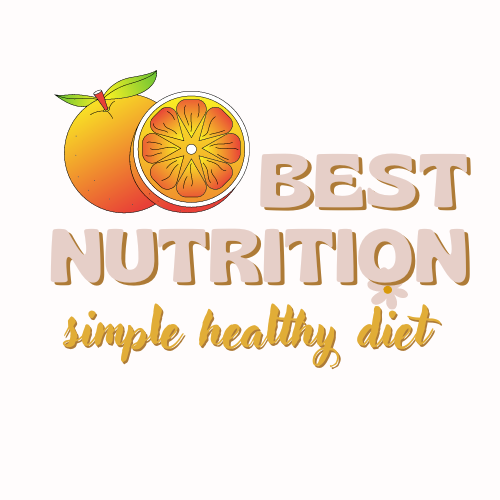Nutrition labels play a crucial role in helping us make informed decisions about our food choices. By providing important information about serving sizes, calories, nutrients, and daily value percentages, they enable us to choose a healthy diet and make better-informed food decisions.
When we read and understand nutrition labels, we can accurately determine appropriate portion sizes, identify the number of calories consumed, and assess the nutrient content of various foods. This knowledge empowers us to take control of our diet and prioritize our health and well-being.
Key Takeaways:
- Nutrition labels provide valuable information about serving sizes, calories, and nutrients.
- Understanding nutrition labels helps us make informed food choices.
- By reading nutrition labels, we can assess portion sizes and control calorie intake.
- Knowledge of nutrient content allows us to balance our overall diet.
- Prioritizing our health and well-being becomes possible when we understand the content of our food.
Overview of Nutrition Facts Label
The Nutrition Facts label provides product-specific information on food labels. It includes details such as serving size, calories, and nutrient information. The label is divided into sections, with the main or top section containing information specific to the food or beverage product. The bottom section of the label contains a footnote that explains the Daily Value percentage and the number of calories used for general nutrition advice.
Understanding the Nutrition Facts label is essential for making informed choices about the food we consume. It provides valuable information that can help individuals assess and compare the nutritional content of different food products. By analyzing the serving size, calories, and nutrient information presented on the label, consumers can make better-informed decisions about their dietary intake, promoting healthier lifestyles.
“The Nutrition Facts label empowers consumers by giving them access to crucial information about the nutritional composition of the food products they purchase.”
Let’s take a closer look at the different sections of the Nutrition Facts label and understand how it can assist us in making healthier choices:
Serving Size
The serving size section of the label provides information about the recommended portion size for the food or beverage. It is important to note that the serving size may not necessarily reflect the amount typically consumed, but rather serves as a reference point for comparing nutritional content between similar products. By understanding the recommended serving size, individuals can better manage their calorie and nutrient intake.
Calories
The calories section of the label indicates the amount of energy obtained from consuming a single serving of the food or beverage. It is essential to be mindful of our calorie intake, as excessive consumption can lead to weight gain and related health issues. By checking the calorie content on the label, individuals can track and manage their energy consumption, maintaining a balanced diet.
Nutrient Information
The nutrient information section of the label provides detailed data about the different nutrients present in the food or beverage. It includes essential nutrients such as carbohydrates, proteins, fats, vitamins, and minerals. By analyzing this information, individuals can make conscious decisions about their dietary choices, ensuring they meet their nutritional needs while limiting the consumption of harmful components like sodium, saturated fats, and added sugars.
Understanding and utilizing the information provided on the Nutrition Facts label enables consumers to be more informed about their food choices. By paying attention to serving sizes, calories, and nutrient information, individuals can make healthier decisions, promoting overall well-being and a balanced diet.
| Nutrient | Amount Per Serving | % Daily Value* |
|---|---|---|
| Calories | 200 | 10% |
| Total Fat | 12g | 15% |
| Sodium | 350mg | 15% |
| Total Carbohydrate | 20g | 7% |
| Protein | 5g | 10% |
*The % Daily Value (DV) tells you how much a nutrient in a serving of food contributes to a daily diet. 2,000 calories a day is used for general nutrition advice.
Serving Information on Nutrition Labels
The serving information on nutrition labels is essential for understanding the portion sizes and nutrient amounts in food products. It includes two key elements: the serving size and the number of servings per container.
The serving size indicates the standardized amount of food that is considered one serving. It is provided in familiar units, such as cups or pieces, and is also accompanied by the metric amount in grams (g). Standardized serving sizes allow for easy comparisons between similar foods, making it simpler to assess the nutritional value.
By paying attention to the serving size, individuals can determine if they are consuming half a serving, one serving, or more. This helps in accurately estimating the nutrient amounts and maintaining a balanced diet.
Understanding Portion Sizes and Standardized Serving Sizes
The importance of standardized serving sizes cannot be overstated. They allow consumers to easily compare similar foods and understand the nutritional content in relation to the serving size. Here are a few key points to remember:
- Standardized serving sizes enable accurate nutrient information comparison between products.
- They help individuals calculate the intake of calories and other nutrients based on the portion consumed.
- Standardized serving sizes also aid in creating consistent dietary guidelines for healthy eating.
Assessing Nutrient Amounts by Understanding Serving Information
The serving information on nutrition labels is crucial for accurately assessing the nutrient amounts in a food product. By understanding the serving size and the number of servings per container, individuals can make informed decisions about their food choices. Here’s why it matters:
Serving sizes provide a reference point for calorie and nutrient calculations.
Knowing the number of servings in a food package helps in determining the total nutrient intake.
Accurate assessment of nutrient amounts helps individuals maintain a balanced diet.
Visualizing Serving Information: An Example
Let’s explore a practical example of serving information on a nutrition label:
| Serving Size | Servings per Container | Calories | Total Fat | Sodium |
|---|---|---|---|---|
| 1 cup (240g) | 2 | 250 | 10g | 400mg |
In this example, the serving size is 1 cup (240g), and there are 2 servings per container. This means that consuming the entire container would provide 500 calories, 20g of total fat, and 800mg of sodium. By understanding the serving information, individuals can accurately assess their nutrient intake and make informed decisions about portion sizes.
Importance of Calories on Nutrition Labels
Calories play a vital role in our daily lives by providing the energy our bodies need to function. When it comes to nutrition labels, calories are one of the key pieces of information that can help us maintain a healthy body weight.
Understanding the calorie content of the food we consume allows us to make informed decisions about our daily calorie intake. By balancing the calories we consume with the calories we burn through physical activity, we can maintain a healthy energy balance and avoid weight gain.
The daily calorie intake required varies depending on several factors, including age, sex, height, weight, and physical activity level. Therefore, it’s important to pay attention to the calorie information provided on nutrition labels to ensure we are meeting our individual needs.
By knowing the calorie content of the foods we eat, we can make conscious choices that align with our health and wellness goals. Whether we’re trying to maintain our current weight, lose weight, or even gain weight in a healthy manner, understanding calories helps us make informed decisions.
By considering the calorie information on nutrition labels, individuals can select foods that align with their specific calorie requirements and goals. This knowledge empowers us to make healthier choices and maintain a balanced diet.
Understanding Nutrients on Nutrition Labels
Nutrition labels provide valuable information about the key nutrients that greatly impact our health. By paying attention to these nutrients, individuals can make informed choices about their diet and develop healthy eating habits.
The Impact of Nutrients on Health
One of the crucial aspects of understanding nutrition labels is recognizing the impact that certain nutrients have on our health. For example, consuming excessive amounts of saturated fat can increase the risk of developing cardiovascular disease and other health conditions. Similarly, a high intake of sodium is associated with high blood pressure, which can lead to various complications.
Moreover, the consumption of added sugars should be monitored as they can contribute to weight gain and increase the risk of conditions like diabetes. It is important to note that not all sugars are listed as “added sugars” on nutrition labels. Natural sugars found in fruits and dairy products, for example, are not considered added sugars.
On the other hand, nutrients like dietary fiber, vitamins, and minerals play a positive role in maintaining good health. Sufficient intake of dietary fiber can aid in digestion and lower the risk of heart disease. Vitamins and minerals, such as vitamin C and calcium, support various bodily functions and contribute to overall well-being.
Reading Nutrition Labels for Nutrient Analysis
When reading nutrition labels, it’s essential to focus on the amounts of these crucial nutrients. Look for information on saturated fat, sodium, added sugars, dietary fiber, vitamins, and minerals within the label’s presented Nutrition Facts section. Understanding the nutrient content of different foods can help individuals make informed choices about their diet.
Remember, it’s not just about calories; the quality and balance of the nutrients matter for our overall health and well-being.
By assessing the nutrient information provided on nutrition labels, individuals can choose foods that align with their dietary goals, such as minimizing saturated fat and sodium intake while maximizing dietary fiber, vitamins, and minerals.
Make Nutrition Labels Your Guide
Understanding the nutrient details on nutrition labels empowers individuals to take control of their dietary choices. By paying attention to the impact of nutrients on health, individuals can make intentional decisions about the foods they consume. Reading nutrition labels and understanding the nutrient content is a valuable tool for promoting a healthy lifestyle.
The Percent Daily Value (%DV)
Nutrition labels provide valuable information about the nutrient content of food products, and one important aspect is the percent Daily Value (%DV) displayed on the label. The %DV indicates how much of a specific nutrient in a serving contributes to the recommended daily intake. By understanding and interpreting the %DV, individuals can make informed choices about their food consumption, considering the nutrient contribution and making nutrient comparisons between different products.
When looking at the %DV, it’s important to note that a %DV of 5% or less is considered low, while a %DV of 20% or more is considered high. This information allows individuals to determine if a serving of food is high or low in a particular nutrient. For example, if a product has a %DV of 10% for saturated fat, it can be considered a moderate source of that nutrient. On the other hand, a %DV of 30% for dietary fiber indicates a high amount of fiber in the food.
The %DV is a useful tool for nutrient-conscious choices and can be used to compare the nutrient content of different food products. By looking at the %DV of desired nutrients, individuals can select foods that are higher in those nutrients. For example, someone who wants to increase their calcium intake can compare the %DV for calcium on different dairy products to choose one with a higher %DV. Similarly, the %DV can help individuals limit nutrients they want to minimize, such as sodium or added sugars. By comparing the %DV for these nutrients on various products, individuals can choose options with lower %DV values.
Example:
Comparing the %DV for sodium on two different brands of soup, Brand A and Brand B:
%DV for Sodium Brand A 25% Brand B 15% Based on the %DV, Brand B has a lower sodium content compared to Brand A. This information can help individuals choose the option with a lower %DV if they are looking to limit their sodium intake.
By utilizing the %DV on nutrition labels, individuals can make informed decisions about their food choices, ensuring they meet their nutrient needs while balancing their overall diet. It’s a valuable tool to promote healthy eating habits, allowing individuals to consider the nutrient contribution of different foods and make nutrient-conscious choices that align with their dietary goals.
Conclusion
In conclusion, understanding nutrition labels is of paramount importance when it comes to making informed food choices and maintaining a healthy diet. By carefully reading and analyzing the information provided on these labels, individuals can gain valuable insights into the serving sizes, calorie content, and nutrients present in their food. This knowledge enables them to assess portion sizes, control their calorie intake, and achieve a better balance of nutrients in their overall diet.
By prioritizing the understanding of nutrition labels, individuals can make conscious decisions about the food they consume, ultimately leading to better health and well-being. These labels serve as a guide to help consumers identify the nutritional content in various food products, allowing them to select options that align with their dietary preferences and goals.
Informed food choices are a key aspect of maintaining a healthy lifestyle, and nutrition labels are an invaluable tool to support such choices. Whether it’s managing portion sizes, monitoring calorie intake, or ensuring a balanced nutrient consumption, nutrition labels provide the necessary information to make well-informed decisions. By incorporating this knowledge into their everyday lives, individuals can prioritize their health and embark on a journey towards a healthier and more fulfilling lifestyle.
FAQ
Is it important to read nutrition labels?
What is included in the Nutrition Facts label?
Why is serving information important on nutrition labels?
What does the calorie information on nutrition labels indicate?
Why is understanding nutrients on nutrition labels important?
What does the percent Daily Value (%DV) on nutrition labels represent?
Why is it important to read and understand nutrition labels?
Source Links
- https://www.hsph.harvard.edu/nutritionsource/food-label-guide/
- https://www.cdc.gov/diabetes/managing/eat-well/food-labels.html
- https://www.fda.gov/food/nutrition-facts-label/how-understand-and-use-nutrition-facts-label














